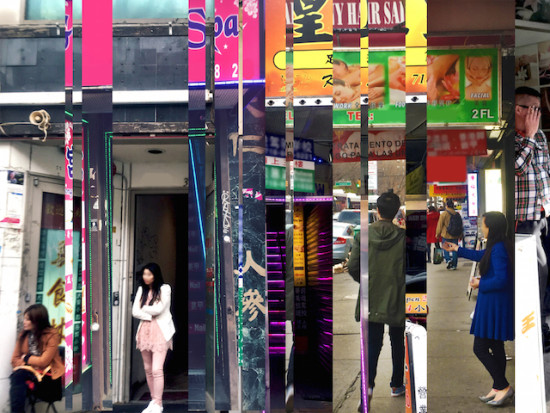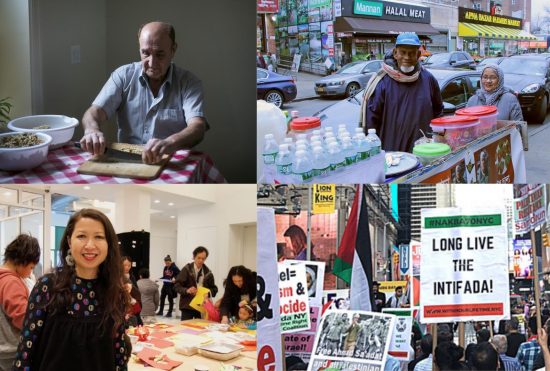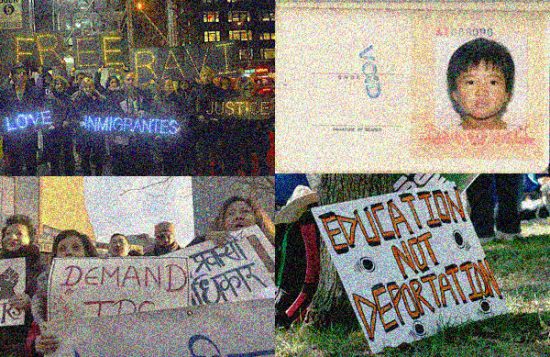“My parents never hid the fact that I was undocumented.”
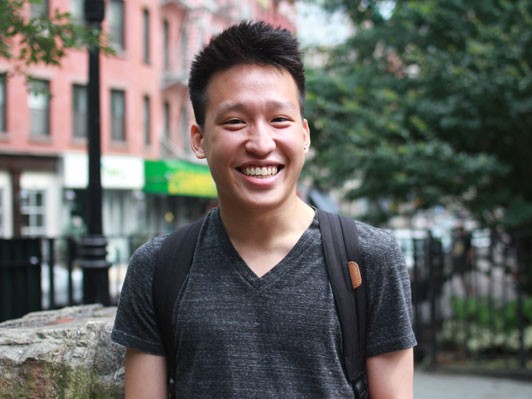
September 17, 2012
Part 4 of an Open City series profiling undocumented New Yorkers. (Click to read Part 1, Part 2, and Part 3.)
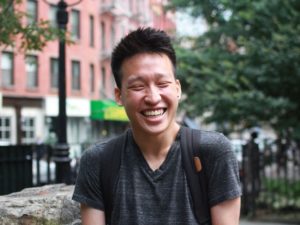 In a few weeks, Jeff Louie will stake his future on an immigration form. Twenty years old, Hong Kong-born but a Brooklyn native, he’s undocumented—a DREAMer to be precise.
In a few weeks, Jeff Louie will stake his future on an immigration form. Twenty years old, Hong Kong-born but a Brooklyn native, he’s undocumented—a DREAMer to be precise.
When I first met Jeff, at Chinatown’s Mama Eatery, I was struck by his high-energy optimism. He speaks at a clip, in sentences shaped like upturned parabolas, punctuated by “um”s and “like”s. He wears his hair short, with just enough gel to perk up the edges.
“My parents never hid the fact that I was undocumented, but it didn’t really affect me until I applied for college. I didn’t know what I could afford without financial aid, so that’s when I started thinking more about my identity as an undocumented student in America.”
Jeff studies graphic design at City College and has been active with immigrant rights groups in Manhattan’s Chinatown, where his father works at a jewelry store. Being vocal has been an asset, he said. “Letting more people know about me being undocumented has opened so many more doors… people just find ways to help you. And if you’re silent, you aren’t going to get any of that support from anybody.”
In immigration speak, Jeff is a “visa overstay” and the only undocumented member of his immediate family. His older brother, a U.S.-born citizen, petitioned two years ago for their parents, who now have green cards. “But siblings can’t do that for siblings,” Jeff said; he had to wait for his parents to obtain legal status and then “put in papers for me,” which they recently did.
When President Obama announced, on June 15, that “certain young people” would be permitted to live and work in the U.S. through a to-be-determined discretionary program, Jeff was cautiously enthusiastic. Today, a few weeks after Citizenship and Immigration Services (USCIS) established a “request” procedure for “deferred action,” he feels more hopeful and has begun gathering documents to apply.
Form I-821D is clear, emphatic in its typography: “Deferred action is a discretionary determination to defer removal action of an individual as an act of prosecutorial discretion… Deferred action does not provide lawful status.” And there is no possibility of appealing or moving to reopen/reconsider the decision.
Like any immigration benefit, deferred action isn’t entirely logical: it seems arbitrary, for example, that one must have been present on June 15, 2012, the day the program was announced—though the agency clarifies that proof of presence “shortly before and shortly after” this date is sufficient.
Another criterion is political window dressing: armed forces veterans may apply, but, with very few exceptions, undocumented immigrants have never been able to enlist. In addition, the instructions and FAQ published by USCIS encourage applicants to submit evidence of employment, such as W-2s or letters from employers, to prove continuous presence; but many employers will be loathe to admit that they unlawfully employed undocumented persons. Finally, although the deferred action form costs nothing, requesters must submit to fingerprinting ($85) and apply for work authorization (Form I-765; $385), for a total of $465.
Jeff is eager to obtain work authorization: despite having worked off the books as a tutor and freelance designer, formal employment has remained out of reach. He’s concerned, though, about the fees and the evidence needed to substantiate USCIS’s criteria.
“There’s been a lot of talk about getting the right documentation and the risks,” he said. “You can submit your school transcript to prove you’re in school, but what about the three months of summer?” He explained that, while “some people are like, ‘I need to be first in line for this,’ others are waiting it out for a bit to see what’ll happen to the first wave of applicants.”
On September 11, the government announced that 72,000 applications have already been received. According to Annie Lai, a Yale Law School instructor assisting DREAMers with deferred action applications, it’s in USCIS’s interest to generously evaluate submissions and approve a large number of requests early on. “A few months’ gap in proof of continuous presence—like during students’ summer vacations—is unlikely to be fatal, and USCIS will send applicants a Request for Evidence in cases of deficient evidence,” she said. Lai also stated that the agency is aware that DREAMers may have worked without authorization and will hopefully provide employers with more guidance in the near future.
“I will be applying for it,” said Jeff, who’s in touch with a lawyer at the nonprofit Asian American Legal Defense and Education Fund. “It’s relatively low-risk for me personally since my parents have already submitted some type of documents. So it’s not like I’d be giving information that they might not already have.”
Jeff understands that not all undocumented people are similarly situated, pointing to the need for a DREAM Act at the federal and state levels. And, he said, “What is next for the other people who don’t qualify for the DREAM Act? It’s a step-by-step process.”
Still, he said, “I’ve been meeting a lot more DREAMers, and they’ve been very excited about deferred action. They are very grateful that they can now apply for work permits, get driver’s licenses, travel.” Some of his friends, who’d set deadlines to return to China, Korea, and other “home countries” in the absence of immigration reform, have now opted for a wait-and-see approach. It’s a “subtle shift,” Jeff said, but “things feel a little more optimistic.”
Additional reporting by Josh Kandell.

